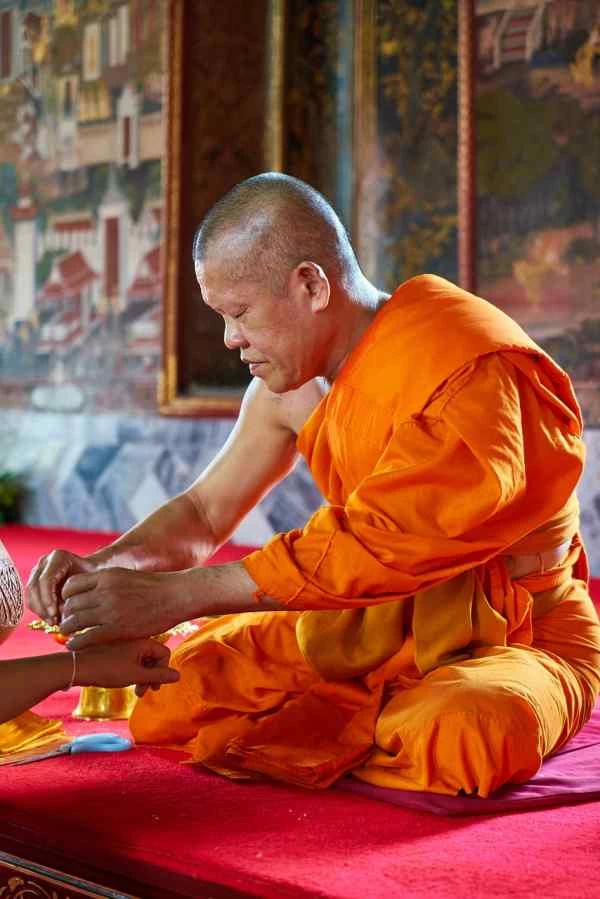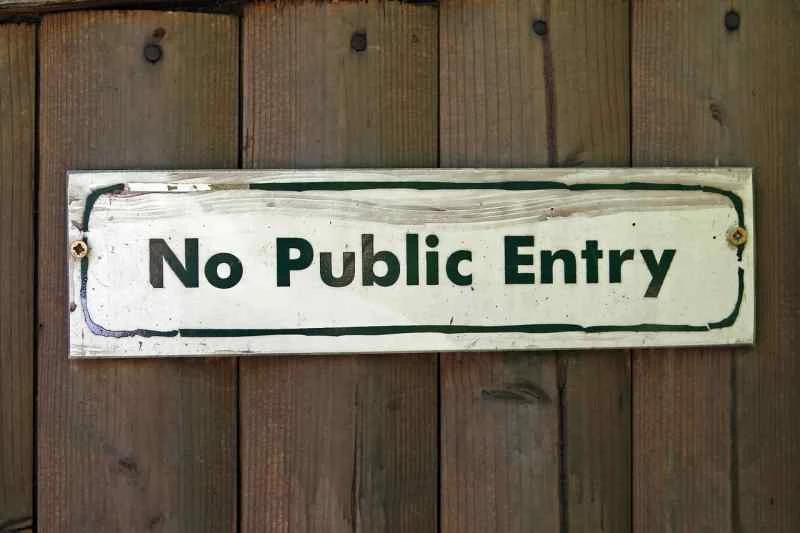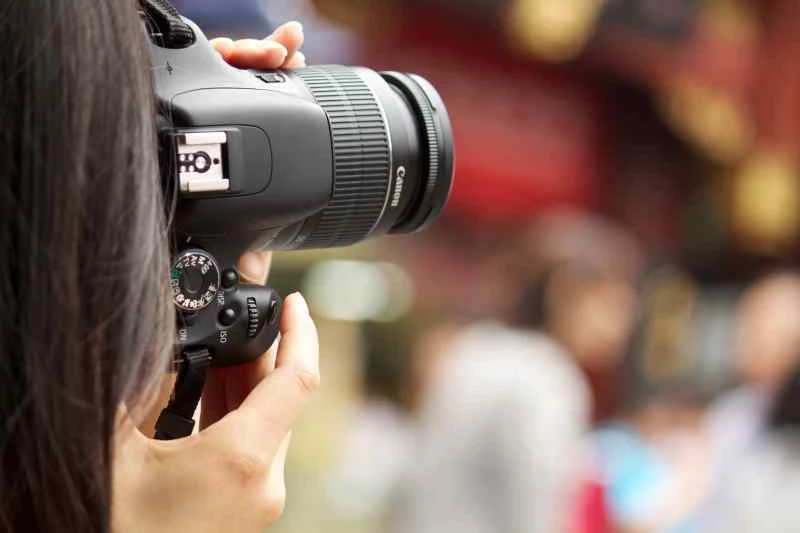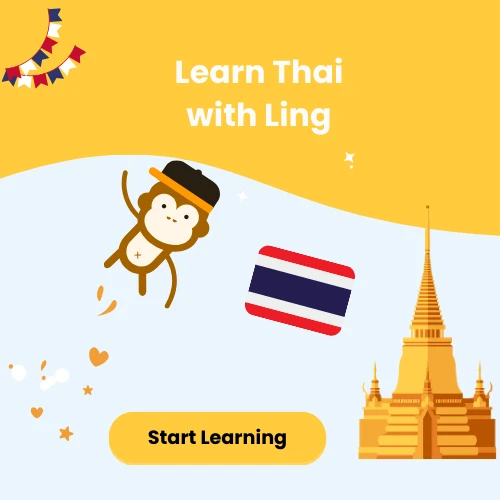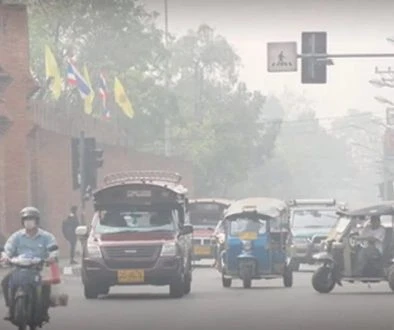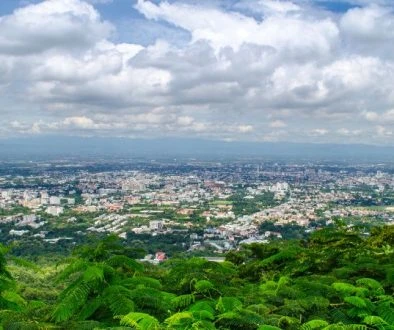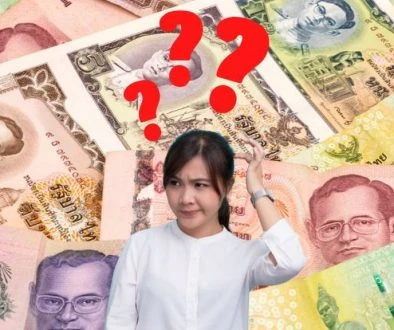What you can and can’t do when you visit a wat or temple – the do’s and don’ts in temples in Thailand
Often temples are so mesmerizing you find yourself suddenly inside one, eyes a lit by the sun reflecting off the mirrored decorations. You may then feel a strange sensation; people are staring at you, possibly pointing at you and shoving what looks like a folded sheet at you.
What’s going on?
Temple etiquette – What should you wear to a temple?
There is a temple dress code! You may be called over to an area where someone hands you a folded sheet looking thing. It’s not a sheet they are offering you but a floor length wrap-around skirt with a shawl or shirt, similar to but much plainer than the image of above.
Anyone in your family will be offered the extra clothing if a local feels you are breaking the dress code. Unfortunately, not all temples offer this service and you may be asked to leave. You can always return with the proper attire later! The dress code rules are pretty straight forward:
Temple dress code for women
Basically think of a Catholic school girl’s uniform; don’t wear short skirts or shorts that show above the knee. Showing your shoulders in any fashion is unacceptable and you’ll also have to cover up your cleavage. Pants and long skirts are fine and so are leggings! Because it can be so hot during temple visits, why not carry an extra set of leggings or a t-shirt you can throw on under a skirt and over a tank top? That way you can wear cooler clothing in between temple visits.
Temple dress code for men
For men, they can get away with a regular T-shirt and shorts that go to the knee or longer. Showing shoulders and lots of leg is a no no!
Temple dress code for children
Usually children can get away with anything, but girls are likely to be judged more harshly than boys. Just make sure they aren’t showing shoulders or their knees and they should be fine!
Why is there a dress code?
Out of respect for the chastity of the monks, women and men are not to show the majority of their body parts. That’s about the whole truth to it.
Find family friendly temples to visit around Chiang Mai!
Temple etiquette – No shoes allowed?!
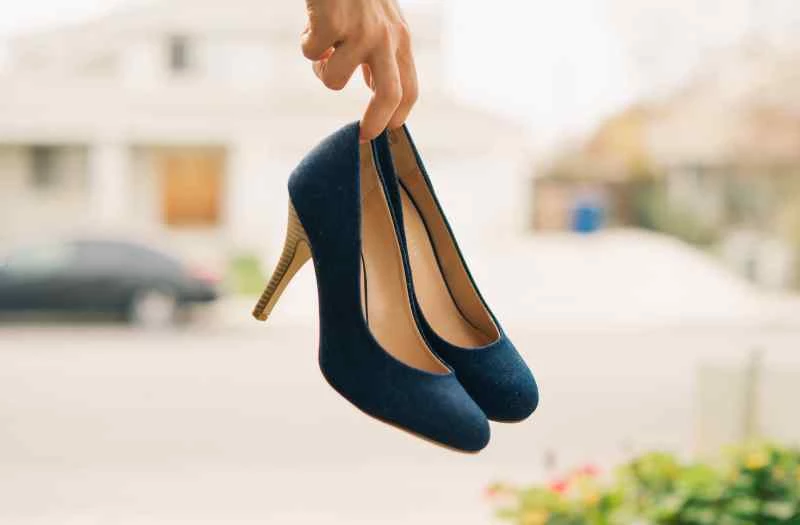
How to worship or pray at a temple
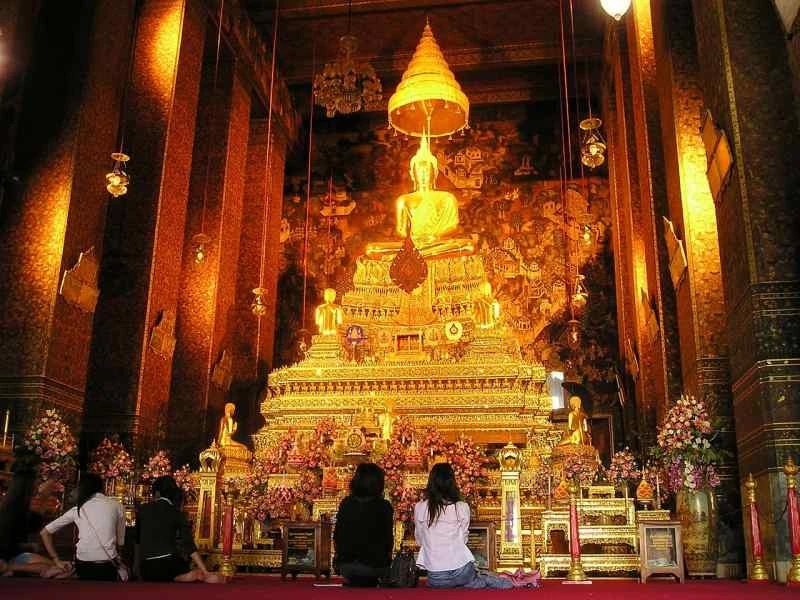
Simply sit with your legs tucked behind you or off to the side, place your hands in a prayer-like position, and bend down until your forehead touches the ground, or sit like my daughter is here at a local kid friendly temple. Then make a silent wish, hope, or prayer!
How to get a monk’s blessing at a temple
Sometimes there will be a monk blessing people. Don’t be shy! He’ll bless foreigners too! Observe the people going before you, but the process generally goes like this:
- Get down on your knees and shuffle forward until you are in front of him.
- Then clasp your hands together as if in prayer and bow.
- He will then begin to chant and spray ‘holy’ water on you.
- The blessing is complete once he has tied a white string around your wrist. The white string is made from cotton and represents good luck.
The whole process takes about 2-3 minutes and the entire family can be blessed two at a time or sometimes all at the same time!
How long do you wear the white bracelet for?
Some people will wear it until it falls off, while others will remove it after a few days.
Are you expected to make a donation?
It is widely expected that you will make a donation while visiting a temple, especially if you’ve been blessed by a monk. It is a local custom to donate at minimum 20 baht. All around the temple you will see opportunities; pots, statues, boxes, to put money into. The best and most fun things to donate are coins, especially for the kids who just love pushing them through the coin slots. 1, 5, or 10 baht coins are fine, alternatively you can bring food to donate to the monks.
Don’t go exploring inside every building you see!
Some areas of a temple are off limits to locals and tourists. These areas are often obvious. If not a soul can be seen, you probably shouldn’t be there! These places are either private or sacred.
One such place is the monk house. Monks tend to live on temple grounds and their housing is off limits. Another place is out of bounds, but only to females. Thai Buddhism is very patriarchal. Women are not allowed access to all aspects of the religion. On many temple grounds, there are smaller versions of the larger worship or merit temples. These are often incredibly crafted and photogenic structures. They seem to have an energy around them that pulls you towards them. Inside, lies an entity or special representation of a deity that’s believed to get you one step closer to enlightenment. But because women are not allowed to reach so called enlightenment, they are not allowed to see the deity!
Temple etiquette – Can you take photos at a temple?
Yes! No worries! Camera use is widely accepted. Remember to use your flash sparingly and, if you can, turn off the beeping or clicking sound your camera makes when it snaps a shot. Always keep in mind, especially inside the prayer area, that you are capturing private moments; moments that strangers may not want to have taken.
Shhh! Be quiet!
The temples are a place of prayer and worship, so it’s always good to remind kids to be quieter than normal. Laughing is also a big no-no. Some of the Buddhist practices or sounds you may hear the monks make can seem out of this world. Your child’s reactions, although innocent, could be interpreted in an unseemly way. Let your curiosities get the best of you by talking with a monk instead!
Curious? Talk with a monk
A few temples offer Monk Chat. You can sit with a monk, or a table of them, and get into some pretty fantastic discussions. Often the monks are quite young and are very interested in the world they have yet to explore. Anyone can chat with a monk, although for women, only older monks are allowed to speak with you.
Don’t expect their English to be perfect. These chats also serve as a way for them to learn English.
Where and when can you chat with a monk?
- Wat Chedi Luang: Daily from 9am-6pm
- Wat Pra That Doi Suthep: Daily 1pm-3pm at the International Buddhism Centre
- Wat Suan Dok: Monday, Wednesday, and Friday 5pm-7pm
- Wat Umong: Monday, Wednesday, and Friday 5:30pm-7:30 pm
Don’t worry, smile!
Thai people are known for their friendliness and relaxed nature, especially those in the North. They are very understanding that not all visitors are aware of local cultural practices. The best way to ease any uncomfortable situation is to smile😊 More often than not, someone will try to help you or explain to you what you should do. Now it’s time to get your temple on!
Things to consider
It gets hot out there! It can be too hot to dress appropriately for a long period of time, especially if your family is pulling a ‘temple day’ where you try to visit as many wats as you can. Carry shawls to put over your shoulders, or pack leggings to quickly slip in and out of.
Wear hats and sunscreen as many temples are not shaded.
There will be food and drink stalls selling cold drinks – usually fresh coconut, fruits, or ice cream!







